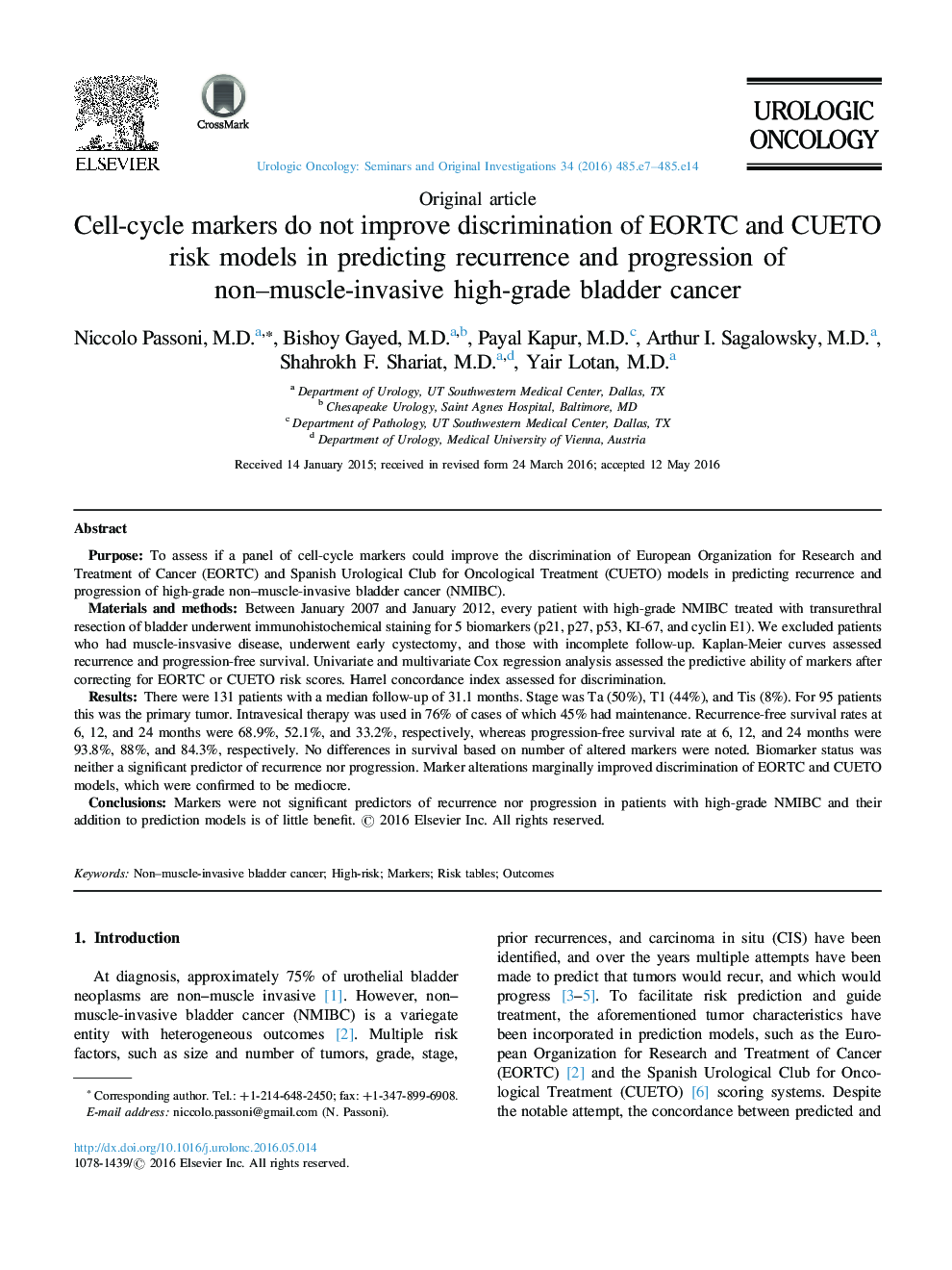| کد مقاله | کد نشریه | سال انتشار | مقاله انگلیسی | نسخه تمام متن |
|---|---|---|---|---|
| 5702812 | 1410654 | 2016 | 8 صفحه PDF | دانلود رایگان |

- Patients with high-grade non-muscle-invasive bladder cancer are a heterogeneous population.
- Statistical models, such as the EORTC and CUETO ones, were developed to improve outcomes prediction.
- Cell-cycle markers have been associated with outcomes after radical cystectomy.
- Unfortunately these markers do not improve prediction at the time of TURBT.
PurposeTo assess if a panel of cell-cycle markers could improve the discrimination of European Organization for Research and Treatment of Cancer (EORTC) and Spanish Urological Club for Oncological Treatment (CUETO) models in predicting recurrence and progression of high-grade non-muscle-invasive bladder cancer (NMIBC).Materials and methodsBetween January 2007 and January 2012, every patient with high-grade NMIBC treated with transurethral resection of bladder underwent immunohistochemical staining for 5 biomarkers (p21, p27, p53, KI-67, and cyclin E1). We excluded patients who had muscle-insvasive disease, underwent early cystectomy, and those with incomplete follow-up. Kaplan-Meier curves assessed recurrence and progression-free survival. Univariate and multivariate Cox regression analysis assessed the predictive ability of markers after correcting for EORTC or CUETO risk scores. Harrel concordance index assessed for discrimination.ResultsThere were 131 patients with a median follow-up of 31.1 months. Stage was Ta (50%), T1 (44%), and Tis (8%). For 95 patients this was the primary tumor. Intravesical therapy was used in 76% of cases of which 45% had maintenance. Recurrence-free survival rates at 6, 12, and 24 months were 68.9%, 52.1%, and 33.2%, respectively, whereas progression-free survival rate at 6, 12, and 24 months were 93.8%, 88%, and 84.3%, respectively. No differences in survival based on number of altered markers were noted. Biomarker status was neither a significant predictor of recurrence nor progression. Marker alterations marginally improved discrimination of EORTC and CUETO models, which were confirmed to be mediocre.ConclusionsMarkers were not significant predictors of recurrence nor progression in patients with high-grade NMIBC and their addition to prediction models is of little benefit.
Journal: Urologic Oncology: Seminars and Original Investigations - Volume 34, Issue 11, November 2016, Pages 485.e7-485.e14